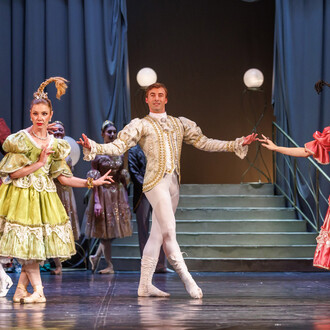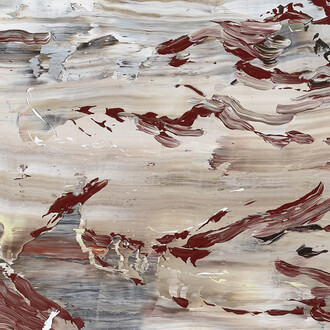The new exhibition Hanauri. The Japan of the flower sellers, part of the project for the refresh of the Japanese gallery, is devoted to the practice of artist Linda Fregni Nagler, who was also at MAO last November, when she performed Things that death cannot destroy.
The exhibition explores her painstaking method of collecting, selecting, reformulating and reactivating a type of Japanese tourist photograph known as Yokohama Shashin. The original photographs, collected by the artist over a period of twenty years and displayed at MAO for the first time, are paired with Fregni Nagler’s own works. Rephotographing the original albumen prints and then printing the resulting photographs in the dark room, she then coloured them by hand using a method similar to the one used at the time (1860–1910). The images thus take on new meanings, illustrating the history of a specific way of looking at exoticism and alterity.
The subject explored at MAO is that of flower sellers (hanauri), a highly appreciated type of street vendor (bōtefuri) active in Japan during the Edo and Meiji periods.
Given the influence of ukiyo-e prints on Yokohama shashin, the exhibition also contextualises and looks closely at the link between Fregni Nagler’s photographs and woodcuts of the same subject from the period right before the birth of photography.
The exhibition also includes 26 albumen prints from the mid nineteenth century from the Fregni Nagler collection along with 6 large-format silver prints hand coloured by the artist and 4 positives on glass, visible through two visors.
Alongside these works are three woodcuts on the flower seller theme: the representation of the spring months, with an illustration of the month of April by Utagawa Kunisada, from the Museo d’Arte Orientale, Venice; At the dntrance to the temple of Kanda by Koikawa Harumachi, from the Museo d’Arte Orientale E. Chiossone, Genoa, and Toyokuni III by Utagawa Kunisada, from the series Six sellers on summer evenings, from a private collection.
The plant and flower theme is also found in the refined kesa textiles from the MAO collection, dating back to the Edo period, and in the kimonos that also enrich the exhibition, one from Palazzo Madama and two from the Museo d'Arte Orientale, Venice, as well as three fine lacquer pieces and three kakemono by Yanagisawa Kien, Kawamura Bunpō and Tomioka Tessai (from the Edo and Meiji periods) on loan from a private collection.
The rehang of the Japanese gallery is part of the MAO exhibition programme which, through loans from Asian art collections – public and private, national and international – aims to stimulate reflection on and develop new narratives around the Museum's collection. Hanauri is also part of #MAOtempopresente, a project that uses contemporary art as a means of interpreting and the collections through the inclusion of contemporary works and site-specific projects created within the residency programme instituted in 2022.
Parallel to the exhibition in the galleries, the three Japanese suits of armour from the collection, dating from the late seventeenth to the first half of the nineteenth century, have been relocated to the Salone Mazzonis, where their restoration will be open to the public and begin in January 2025.
















